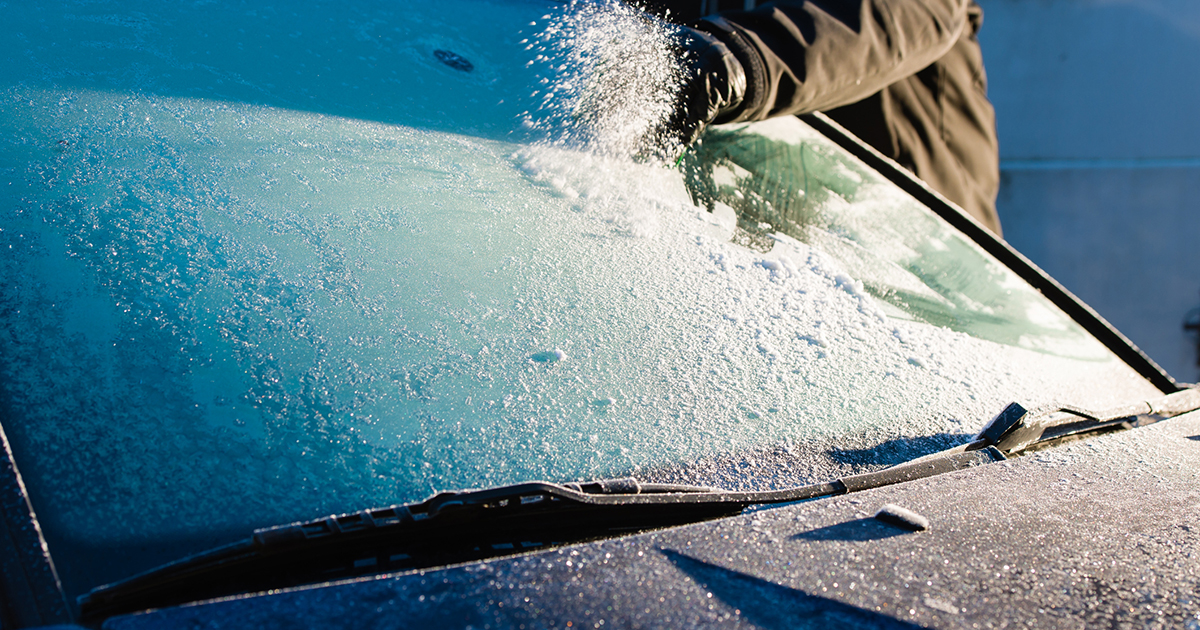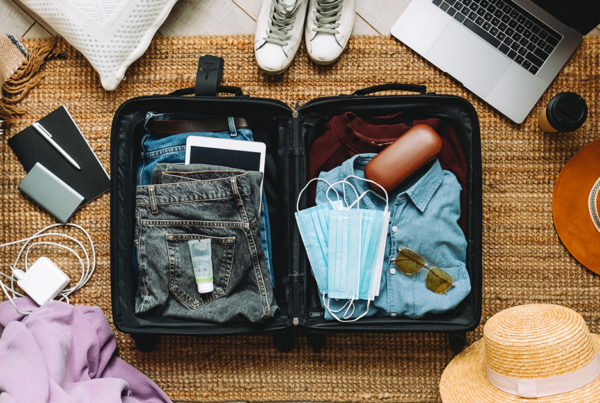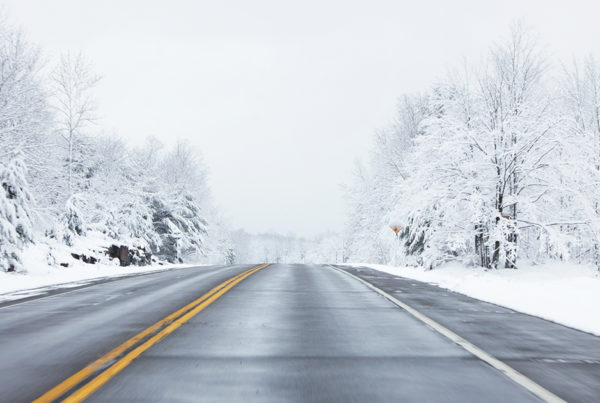Whether you’ve lived in cold winter climates your entire life or have transplanted to the area, it’s important to remember that winter driving comes with considerations not found in other seasons. While you can try to avoid leaving the house as much as possible from October to April, odds are high that you’ll need to leave the house at some point for grocery pick-up, a doctor’s appointment or picking up a to-go order from your favorite restaurant, so prepping your vehicle and making adjustments to how you drive can help keep you safe.
Before you go
- Maintain your car. Winter weather can be tough on vehicles. Cold temperatures cause the air in tires to contract, making the tires flatter. Fluids in your car’s systems can thicken or even freeze if you don’t switch to ones rated for cold temps. An older battery may not have enough juice to start. In the fall or before any long winter road trips, do a cool weather maintenance check, or take it in to the shop.
- Check the weather and allow more time. Even for relatively short trips, it’s important to know what kind of weather you could be driving into. If conditions may get worse, leave earlier or delay your trip. Allow extra time—especially for routine travel like to and from work—so you’re not tempted to go faster than is safe for the road conditions.
- Clean off your car. Your fingers may feel like they’re frozen and all you want to do is hop in your heated car, but go through the process to completely de-ice and de-fog your windows and mirrors so you have full visibility, and don’t forget to clear the snow off of your headlights and taillights so you can see others and others can see you. Bonus points for scraping snow and ice off the surfaces of your car so it doesn’t fly off at others while you’re driving.
- Pack a car kit. It may feel like overkill, but once you put these items in your car you can pretty much forget about them, and the hassle will be more than worth it if you ever do need them.
- Cat Litter (non-clumping), sand, or safety absorbent for traction if your tires are stuck in snow or mud. (Tip: If you don’t have these and get stuck, you can wedge a floor mat under your tire, which is especially helpful in deep snow.)
- Blanket, spare winter gear like gloves, hats and socks, and hand and body warmers in case you have to wait in a cold car or walk in the elements to get help
- Ice scraper (you can buy extra-long ones to reach the top of SUVs or trucks)
- Folding shovel in case you slide off the road and need to dig out
- Tow straps in case you or someone else needs help out of a tough spot
- Bright colored cloth, small mirror or a reflective road sign to help you be seen by other drivers or emergency vehicles if you slide into the ditch or need to pullover until visibility improves.
- Keep these items in your vehicle year-round: Flashlight, water, non-perishable snacks like granola bars, road flares, jumper cables, first aid kit, basic tools, portable air compressor and/or Fix a Flat, cell phone charger cable and/or battery backup (Tip: When you take your car in for annual maintenance, swap out any batteries for fresh ones.)
On the road
- Down. But not too slow. It goes without saying that you should drive more cautiously in bad weather. A good rule of thumb is to only drive as fast as you can safety stop. But, if you find yourself having to go too slow you could be a hazard to other drivers, and it’s best to get off the roadway until the weather improves.
- Sometimes take the road less traveled. When walking through deep snow, it’s often easier to step in someone else’s footprints. On the roads, however, following in packed-down tire tracks could have you driving on a slick layer of ice. Shifting a bit to one side within the lane could put your tires on less slippery snow.
- Know how to handle a slide. Driving in poor road conditions is unavoidable sometimes, so one of the best things is to know what to do if your car loses traction. First and foremost, do not panic. Take your foot off the accelerator, but also avoid hitting the brake. Hold the steering wheel steady or very gently turn INTO the direction of the slide. This will help your car regain traction rather than trying to fight against it.
- Don’t use cruise control in any type of wet weather. Think about how cruise control works: it sets your car at a specific speed and will accelerate to maintain that speed. If your tires lose traction due to water, snow or ice, the car may automatically speed up which, even for a second, could put your car out of control.






 Federally Insured by NCUA |
Federally Insured by NCUA |  Equal Housing Opportunity |
Equal Housing Opportunity |